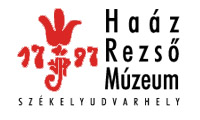Kovács Petronella (szerk.): Isis - Erdélyi magyar restaurátor füzetek 13. (Székelyudvarhely, 2013)
Puskás Katalin: Kísérlet a vörösbomlásos bőr kezelésére, avagy epizód egy 19. századi fotótartó mappa restaurálásából
For technical reasons, we could obtain only aluminium isopropoxide for the album’s restoration. Experiments were necessary because the specialist literature did not extend to every detail regarding its use. We sought out those solvents for the compound which would be least harmful to human health and which would not change the condition of the leather. We wanted to check whether the white deposit on the surface would detach, and if it would, whether it could be removed. In addition we wanted to determine the amount of the chemical necessary for the treatment of a particular area of leather. Since risky experiments of this type could not be performed on the work of art itself, we used test materials similar to the original leather. We worked with different solvents and with solutions of different concentrations in order to select the most suitable on the basis of experimentation. The effectiveness of the treatment could be observed most of all through changes in the pH value. We therefore measured the pH values of leather samples after treatment, subsequently comparing them with the pH values determined before treatment. It could be seen clearly that the values increased, albeit by a few tenth parts. The more chemical was put on the leather, the greater its property of reacting with the free sulphates and neutralising the acidity, thus raising the pH value and stabilising it at a value already more favourable for the leather. This was continued during the time that we could find in the leather a chemical capable of sufficient transformation and in the air a level of humidity that was likewise sufficient. Having assessed our observations, we arrived at the following finding. Of the solutions used during the experiments, the one containing 25 ml isopropyl alcohol, 25 ml mineral spirit, 50 ml toluene, and 1 g aluminium isopropoxide proved to be the most suitable. We used this to stabilise the leather covering of the artefact. Translated by Chris Sullivan 223
